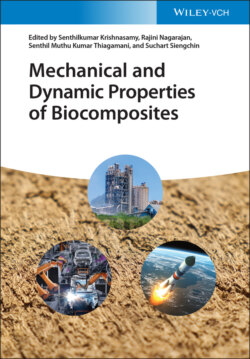Читать книгу Mechanical and Dynamic Properties of Biocomposites - Группа авторов - Страница 17
1.4.1.2 Bamboo/MFC FRP Hybrid Composites
ОглавлениеAsian giants, India and China, are the chief producers of bamboo fiber with more than 80% of global production [21]. This biofiber is highly attractive, due to its renewable nature and low environmental impact. It grows rapidly and has comparative high strength to other biofibers, such as cotton and jute [22].
An unprecedented biocomposite (hybrid) that contained biodegradable poly‐lactic acid (PLA) matrix with microfibrillated cellulose (MFC) and bamboo fiber bundles reinforcements was developed by Okubo et al. [23]. Various nomenclatures have been used for describing MFC in the literature, such as microfibril, microfibrillar cellulose, microfibril aggregates, nanofibril, nanofibrillar cellulose, nanofiber, and fibril aggregates [24]. They conducted an investigation on how MFC dispersion influenced the responses of composites reinforced with bamboo fibers by dispersing MFC in a polymer matrix of PLA by a three‐roll mill calendering process. This calendering process helps to compress or smoothen a material. They used the PLA (bio‐based and biodegradable) polymer matrix for interfacial bonding enhancement with the MFC. The diameter of bamboo fiber bundles was about 200 μm, while that of MFC was just a few microns, which was much smaller. Using gap settings in decreasing order of 70, 50, 35, 25, 15, 10, and 5 μm, they processed the mixture of the MFC and PLA in the three‐roll mill. About 200% increase in the fracture energy was realized when they added 1 wt.% of MFC to the PLA matrix and milled the MFC/PLA composite at the smallest gap setting of 5 μm, which was quite significant. This hybrid composite combination of bamboo fiber and the PLA matrix with 1 wt.% MFC reinforcement was observed to prevent an abrupt crack channel through the bamboo fiber effectively, and thus produced a significant improvement in fracture strength. The results of other mechanical behaviors are presented in Table 1.5.
